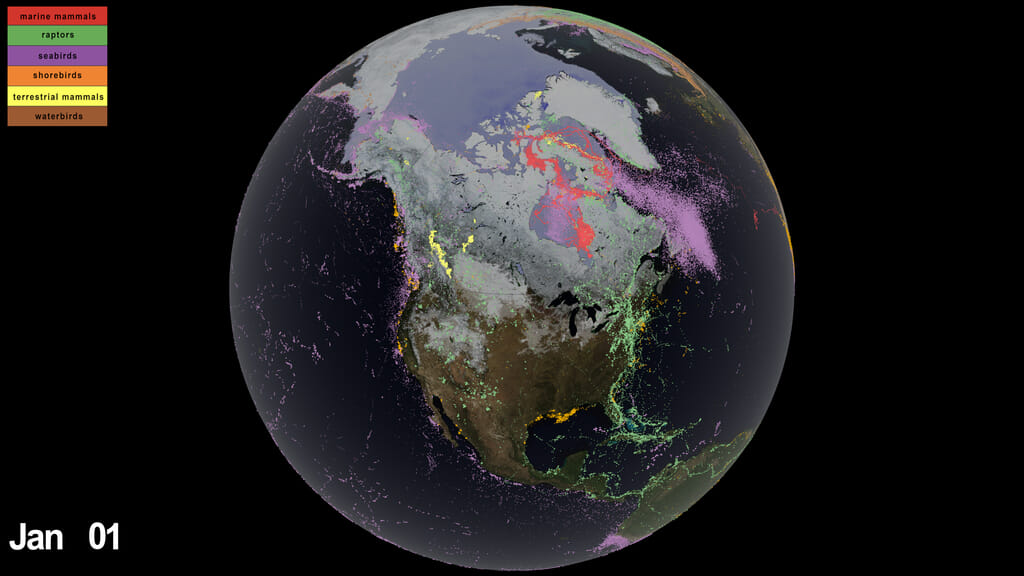How NASA Data Helps Study Animals on the Move
Music: "The Morning Mist," "Big Data," Universal Production Music
Notes on footage:
00:00 - 00:30 Provided by pond5.com
Additional wildlife footage provided by Max Planck Institute of Animal Behavior/Kolguev Goose Catching/Michael Wethington as indicated on screen.
Complete transcript available.
MoveBank provides a free online database that enables animal tracking researchers to manage, share, protect, analyze and store their data. The system includes a set of online tools that help ecologists link animal movement data with information from NASA and other Earth observing satellites, and view global environmental data, such as global precipitation and weather models. The project has over 20,000 users, and this number continues to grow as advances in technology allow the collection and analysis of increasingly high-resolution data. Having a wide range of data sets make it easier for ecologists to track animals and study their movement and distribution.
Funding through Ohio State University supported EnvDATA and Dr. Peter Mahoney's analysis. Mahoney was also supported by the NASA ABoVE campaign (NNX15AT91A).
For More Information
Credits
Please give credit for this item to:
NASA's Goddard Space Flight Center
-
Producer
- Ryan Fitzgibbons (USRA)
-
Technical support
- Aaron E. Lepsch (ADNET Systems, Inc.)
-
Interviewee
- Sarah Davidson (Max Planck Institute of Animal Behavior)
-
Editor
- Ryan Fitzgibbons (USRA)
-
Scientists
- Dalia B Kirschbaum (NASA/GSFC)
- Gil Bohrer (Ohio State University)
- Peter Griffith (SSAI)
- Roland Kays (North Carolina State University)
- Candace Vinciguerra (North Carolina State University)
-
Visualizer
- Greg Shirah (NASA/GSFC)
Release date
This page was originally published on Monday, March 29, 2021.
This page was last updated on Wednesday, May 3, 2023 at 1:44 PM EDT.
